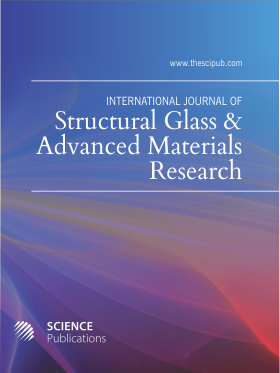About Glassy Amorphous Metal Injection
- 1 Second University of Naples, Italy
- 2 Bucharest Polytechnic University, Romania
- 3 Florida Institute of Technology, United States
- 4 North Carolina A and T State University, United States
- 5 American University of Ras Al Khaimah, United Arab Emirates
Abstract
The paper aims to present studies on the melt flow, melting and rheology of melting in a super-cooled metastable liquid metal, which is injection molded, of the Zr44-Ti11-Cu10-Ni10-Be25 alloy, which can induce selective crystallization. In this process, high Be-velocities were observed, Cu and Ni atoms that crystallized differently in superficial bulk metallic bulk liquids. It wants to highlight and analyze the result of the morphological behavior of microscopic observation regarding Glass Bulk Metallic (BMG) with the composition of a commercial liquid metal alloy (LM001B). One specifies that the injection molded plate was supplied to us by Liquid Metals Technologies Inc., Ca, USA and was manufactured using an Engel injection molding machine operating at 1050-1100°C. The sample that was observed was then cut with a jet of water. FEI Scios Dual-Beam performed microscopic observation. In a cross-section, the presence of crystalline phases can be observed on short-range command. It is also investigated the presence of short-range command groups, their distribution and the effect they can have on the behaviors and properties of alloys. We can now talk about a new material revolution by putting in bulk metallic glasses, Inside Bulk Metallic, (BMGs). It's about metals that are very different from each other, but they can still be combined with the help of intense heat and melted together to produce a beautifully colored and hot liquid. When this liquid is cooled very quickly (fast enough), the metal atoms manage to retain the liquid in a totally random manner, thus forming an amorphous alloy. Glasses made of this amorphous material are very scratch-resistant, BMG material being a plastic, amorphous, but also elastic, but very resistant. You can even speak one of the most powerful materials known today! The weight ratio of BMG can usually be twice as high as that of titanium, magnesium or aluminum. The hardness of the BMG type material is typically a Vickers hardness of more than 500, which is about twice the hardness of most quality stainless steels and titanium and at least four times the hardness of the aluminum and magnesium. BMGs can be three times more elastic or more resistant than virtually all known crystal metal alloys. Some BMGs are highly corrosion-resistant, with alloys containing elements such as beryllium or niobium that tend to be very corrosive. In general, erosion resistance is remarkable in all these BMGs.
DOI: https://doi.org/10.3844/sgamrsp.2018.96.106

- 4,095 Views
- 2,032 Downloads
- 0 Citations
Download
Keywords
- Rheology
- Bulk Glass Metals
- Chemo Rheological Model
- Segregation
- Cold Crystallization
